
 |
 Arthur Bueno, "De-Centering Global Sociology: The Peripheral Turn in Social Theory and Research " English | ISBN: 0367514818 | 2022 | 198 pages | PDF | 5 MB This volume explores the challenges posed to sociological theory and social science research by a growing need to foreground perspectives stemming from, and accounting for, subaltern groups, marginal categories, the Global South, and other politically peripheral regions. 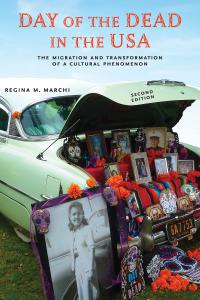 Day of the Dead in the USA, Second Edition by Regina M Marchi English | ISBN: 1978821646, 1978821638 | 238 pages | EPUB | August 12, 2022 | 43 Mb Honoring relatives by tending graves, building altars, and cooking festive meals has been a major tradition among Latin Americans for centuries. The tribute, "El Día de los Muertos," has enjoyed renewed popularity since the 1970s when Latinx activists and artists in the United States began expanding "Day of the Dead" north of the border with celebrations of performance art, Aztec danza, art exhibits, and other public expressions. 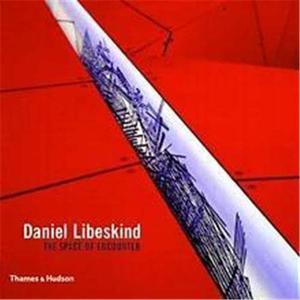 Daniel Libeskind the space of encounter By Libeskind, Daniel 2001 | 224 Pages | ISBN: 0500282579 | PDF | 53 MB For more than twenty years Daniel Libeskind has been regarded as one of the world's leading architectural theoreticians and educators. Since 1973, he has taught at more than forty institutions, maintaining such distinguished positions as head of the Cranbrook Academy of Art's School of Architecture in Bloomfield, Michigan, founder and director of Architecture Intermundium in Milan, Italy, the Sir Bannister Fletcher Architecture Professor at the University of London in London, England, professor at the University of California, Los Angeles' School of Architecture and Urban Planning in Los Angeles, California, and the First Louis Kahn Professorship at Yale University.Throughout Libeskind's career, his approach to the profession of architecture and the development of the world's built environment has defied convention. He is one of the last heroes of the architecture world's avant-garde. And while he is the recipient of numerous awards and citations for his designs, Libeskind's architectural output has largely consisted of models, drawings, poetry, and ephemera. For years, Studio Libeskind sustained itself as a laboratory for the testing of his boundary-breaking ideas.In 1989 Libeskind competed for the commission to design what would become the Jewish Museum Berlin. He won. Since then, he relocated his office from Milan to Berlin, was nominated for the Pritzker prize for Architecture, and was commissioned to design the Felix Nussbaum Haus, a museum for the city of Osnabrück, Germany, which opened to critical acclaim in 1998. In 1999, he was awarded the Deutsche Architektur Preis (German Architecture Prize) for his Jewish Museum Berlin, a structure that received over 250,000 visitors before it contained even a single work of art.Now, because he has been commissioned to design the extension to the Victoria and Albert Museum in London, England, the Imperial War Museum in Manchester, England, the Jewish Museum in San Francisco, California, the JVC University in Guadalajara, Mexico, and, most recently, the extension to the Denver Art Museum in Denved, Colorado, the world is encountering in built form the riveting design concepts of Daniel Libeskind.the first book to get inside Libeskind's extraordinary world, The Space of Encounter eschews the traditional monograph format as it tracks the architect's life's work, pulling the reader back to the 1980s and guiding him through an often mesmerizing array of ideas and projects extending into the year 2005. By revealing for the first time in book form his project proposal texts, excerpts from lauded speeches and lectures, interviews conducted with international newspapers and periodicals, in addition to his poems and correspondence, this book captures Libeskind at a major turning point in his career. Here, we learn of Libeskind's experience of being a radical educator to becoming a high profile, convincing and inspiring architect. Complementing his brilliantly insightful textual material are his forceful drawings and full-color images of his project models, finished projects, and projects in progress.For more than twenty years Daniel Libeskind has been regarded as one of the world's leading architectural theoreticians and educators. Since 1973, he has taught at more than forty institutions, maintaining such distinguished positions as head of the Cranbrook Academy of Art's School of Architecture in Bloomfield, Michigan, founder and director of Architecture Intermundium in Milan, Italy, the Sir Bannister Fletcher Architecture Professor at the University of London in London, England, professor at the University of California, Los Angeles' School of Architecture and Urban Planning in Los Angeles, California, and the First Louis Kahn Professorship at Yale University.Throughout Libeskind's career, his approach to the profession of architecture and the development of the world's built environment has defied convention. He is one of the last heroes of the architecture world's avant-garde. And while he is the recipient of numerous awards and citations for his designs, Libeskind's architectural output has largely consisted of models, drawings, poetry, and ephemera. For years, Studio Libeskind sustained itself as a laboratory for the testing of his boundary-breaking ideas.In 1989 Libeskind competed for the commission to design what would become the Jewish Museum Berlin. He won. Since then, he relocated his office from Milan to Berlin, was nominated for the Pritzker prize for Architecture, and was commissioned to design the Felix Nussbaum Haus, a museum for the city of Osnabrück, Germany, which opened to critical acclaim in 1998. In 1999, he was awarded the Deutsche Architektur Preis (German Architecture Prize) for his Jewish Museum Berlin, a structure that received over 250,000 visitors before it contained even a single work of art.Now, because he has been commissioned to design the extension to the Victoria and Albert Museum in London, England, the Imperial War Museum in Manchester, England, the Jewish Museum in San Francisco, California, the JVC University in Guadalajara, Mexico, and, most recently, the extension to the Denver Art Museum in Denved, Colorado, the world is encountering in built form the riveting design concepts of Daniel Libeskind.the first book to get inside Libeskind's extraordinary world, The Space of Encounter eschews the traditional monograph format as it tracks the architect's life's work, pulling the reader back to the 1980s and guiding him through an often mesmerizing array of ideas and projects extending into the year 2005. By revealing for the first time in book form his project proposal texts, excerpts from lauded speeches and lectures, interviews conducted with international newspapers and periodicals, in addition to his poems and correspondence, this book captures Libeskind at a major turning point in his career. Here, we learn of Libeskind's experience of being a radical educator to becoming a high profile, convincing and inspiring architect. Complementing his brilliantly insightful textual material are his forceful drawings and full-color images of his project models, finished projects, and projects in progress. 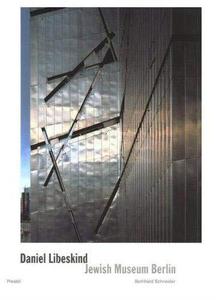 Daniel Libeskind Jewish Museum Berlin between the lines By Schneider, Bernhard 1999 | 64 Pages | ISBN: 3791320750 | PDF | 5 MB Scarcely any other contemporary building has been the focus of so much attention and heated discussion as the Jewish Museum in Berlin. This guide to the museum's architecture sheds light on its symbolism as well as on the philosophy behind it. The historic and social significance of this museum extends far beyond the bounds of the city. Its already famous zigzag structure challenges the very way we regard architecture. 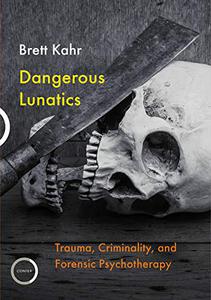 Dangerous Lunatics: Trauma, Criminality, and Forensic Psychotherapy by Brett Kahr English | ISBN: 1913494063 | 148 pages | EPUB | May 1, 2020 | 0.28 Mb Why do human beings commit grotesque acts of violence such as paedophilia and murder? How should we treat the perpetrators of these horrific atrocities? In this gripping book, Professor Brett Kahr examines the nature of criminality throughout history, exploring the ways in which we have progressed from the ancient methods of torture and the execution of offenders to a more humane and psychologically sophisticated approach. Richly steeped in compelling clinical case reports, long-forgotten archival material, and a thorough review of cutting-edge psychological research, Dangerous Lunatics offers a unique insight into the nature of the criminal mind and its potential cure.
 Dallas Riley, "DIY SOLAR POWER FOR BEGINNERS: The Complete Step by Step Guide on How to Install Solar Power For Indoor And Outdoor Living" English | 2022 | ASIN: B09Z3T7DTN | EPUB | pages: 67 | 0.3 mb DIY SOLAR POWER FOR BEGINNERS  Cyber Security and Critical Infrastructures by Leandros Maglaras, Helge Janicke English | 2022 | ISBN: 9783036548456 | 326 Pages | True PDF | 26.6 MB
 Crochet Animal Blankets and Blocks: Create over 100 animal projects from 18 cute crochet blocks (Crochet Animal) by Ira Rott English | August 9, 2022 | ISBN: 1446309215 | True EPUB | 127 pages | 204 MB Crochet fantastic animal-themed blankets, pillows and more with this colorful collection of crochet animal blocks.
 Critical Points for the Organisation of Test Performance Studies in Microbiology: Plant Pathogens as a Case Study English | 2022 | ISBN: 303099810X | 100 Pages | PDF EPUB (True) | 21 MB
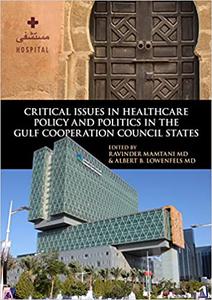 Ravinder Mamtani MD, "Critical Issues in Healthcare Policy and Politics in the Gulf Cooperation Council States" English | ISBN: 1626165009 | 2017 | 192 pages | EPUB | 1366 KB This is the first book to examine challenges in the healthcare sector in the six Gulf Cooperation Council (GCC) countries (Saudi Arabia, Oman, the United Arab Emirates, Qatar, Kuwait, and Bahrain). These countries experienced remarkably swift transformations from small fishing and pearling communities at the beginning of the twentieth century to wealthy petro-states today. Their healthcare systems, however, are only now beginning to catch up. |